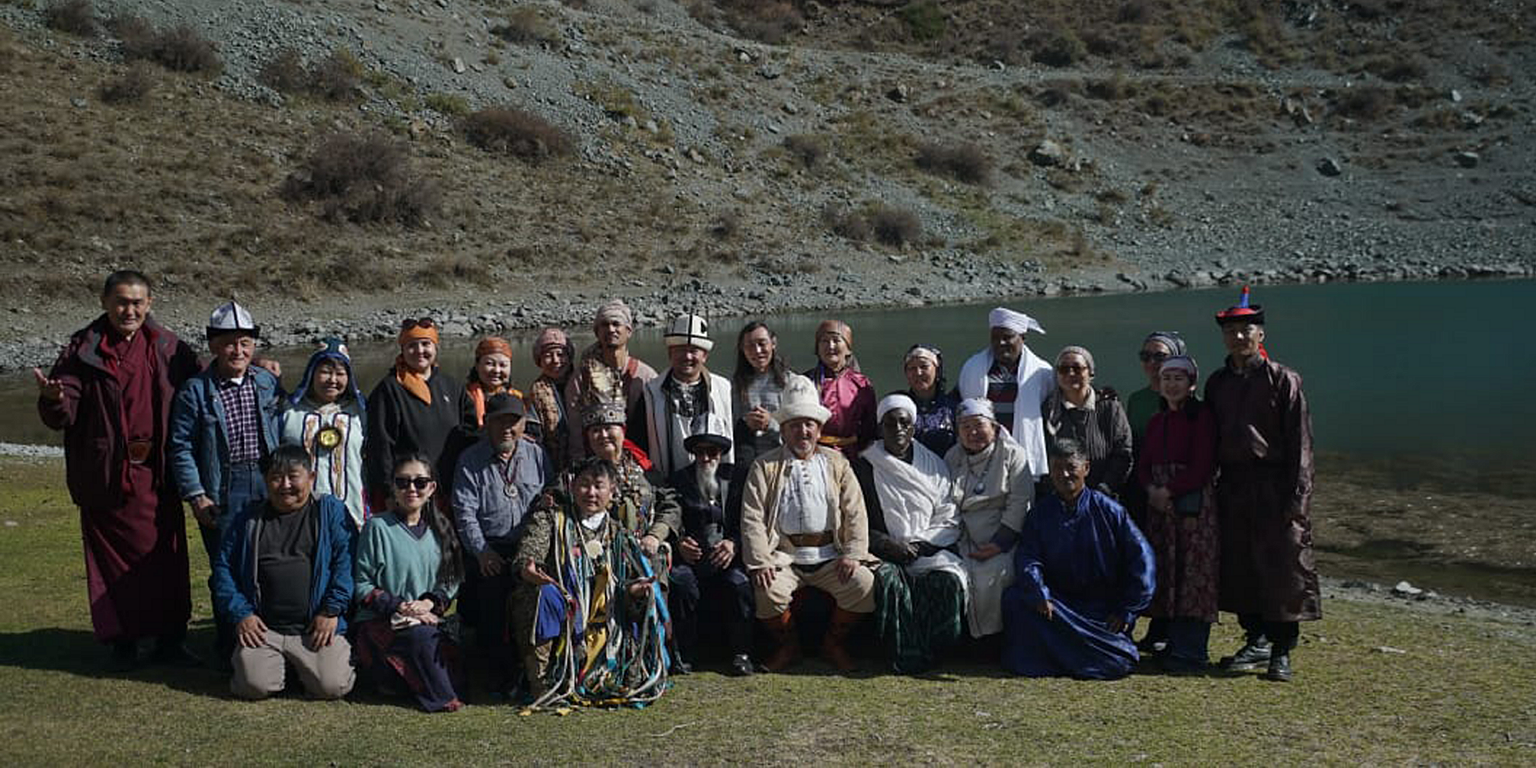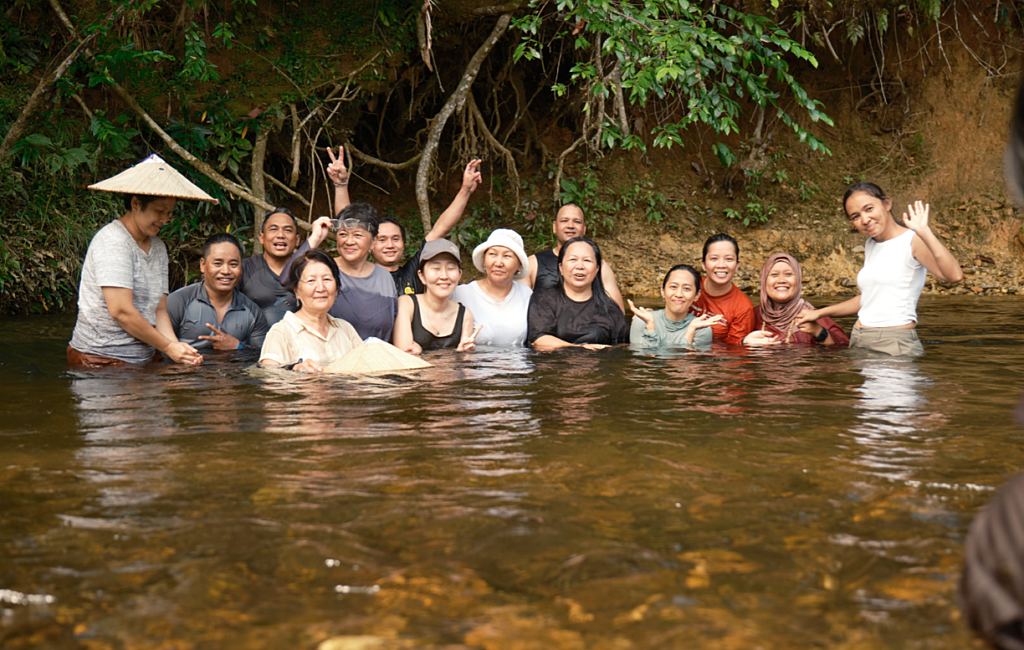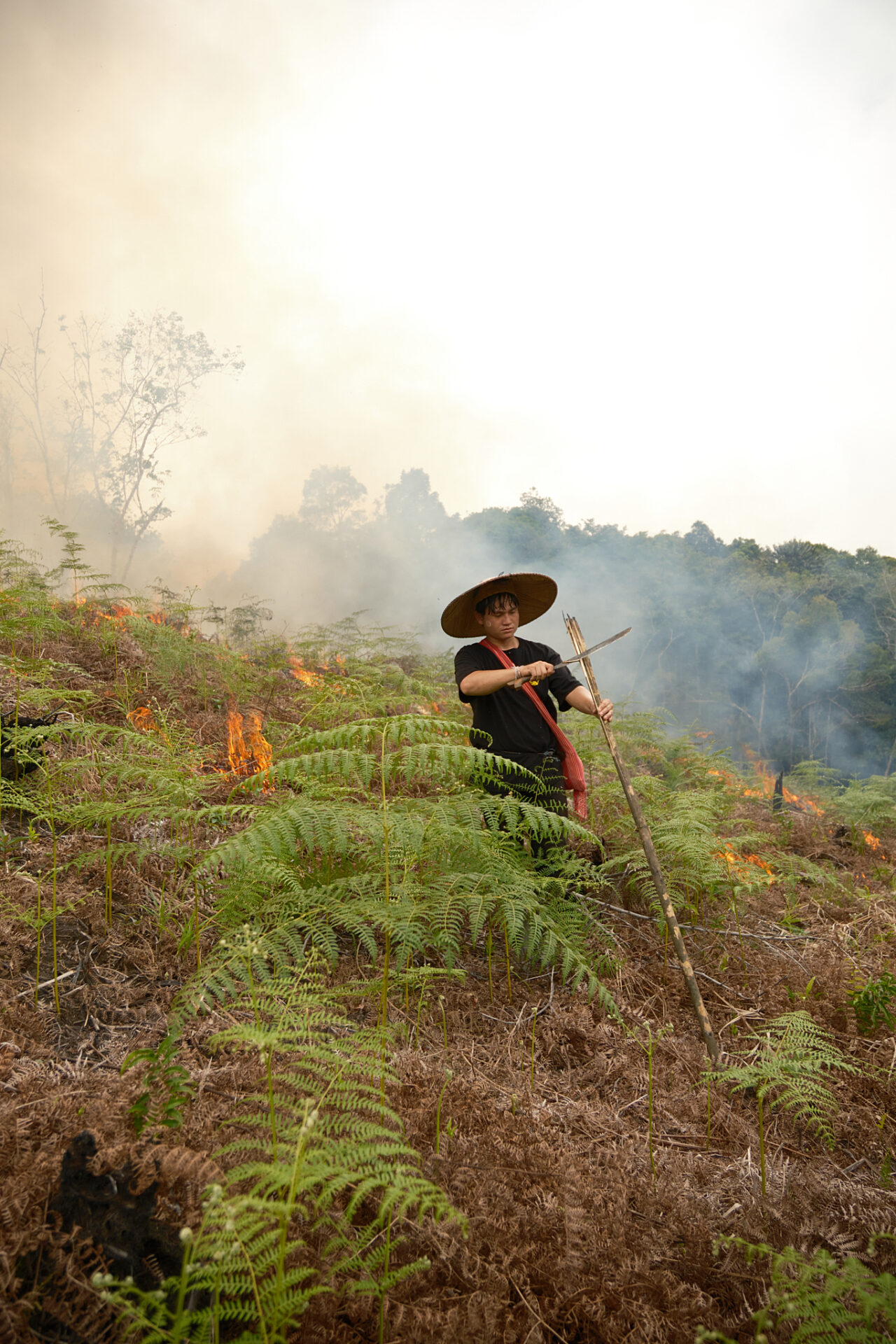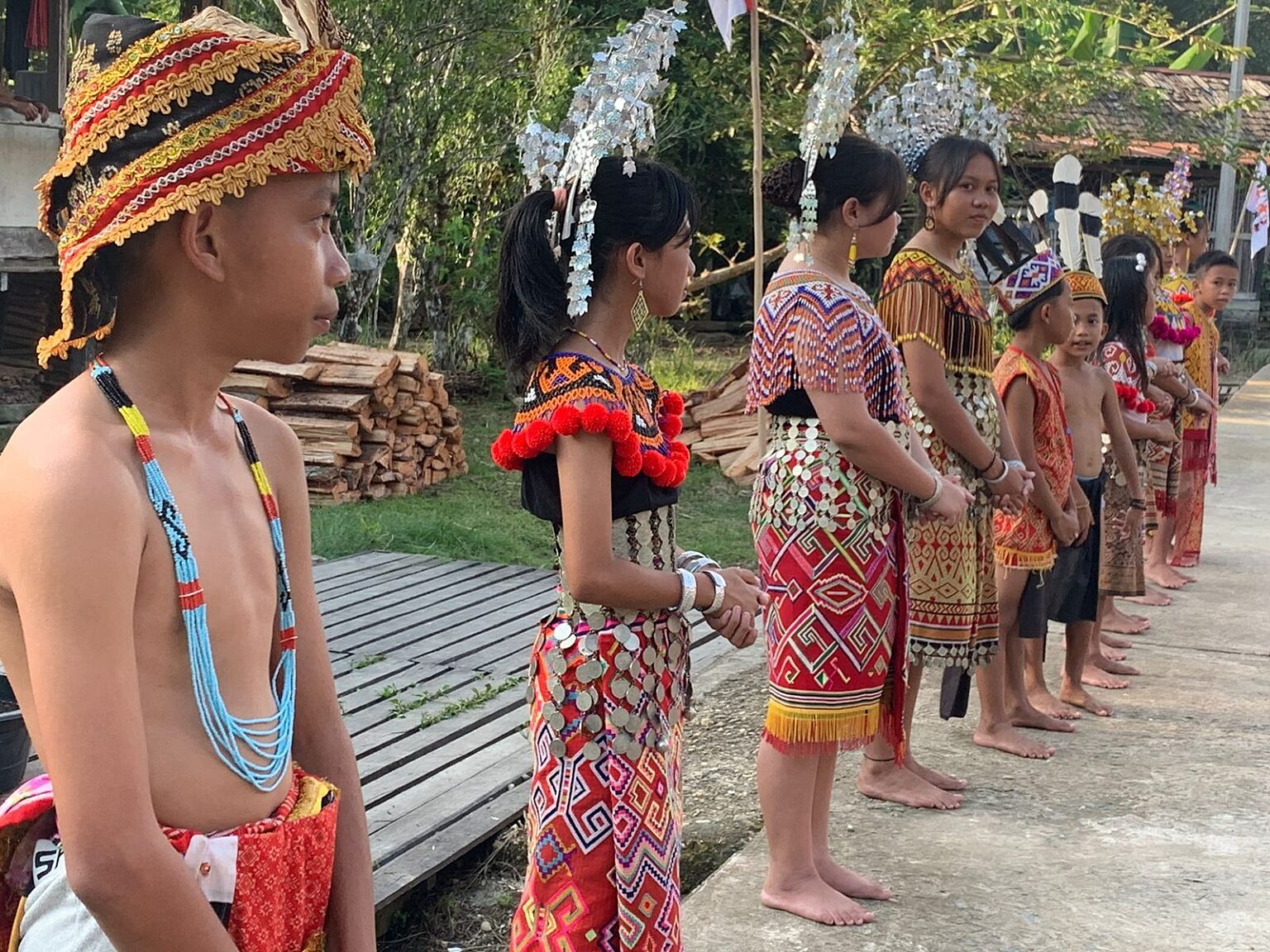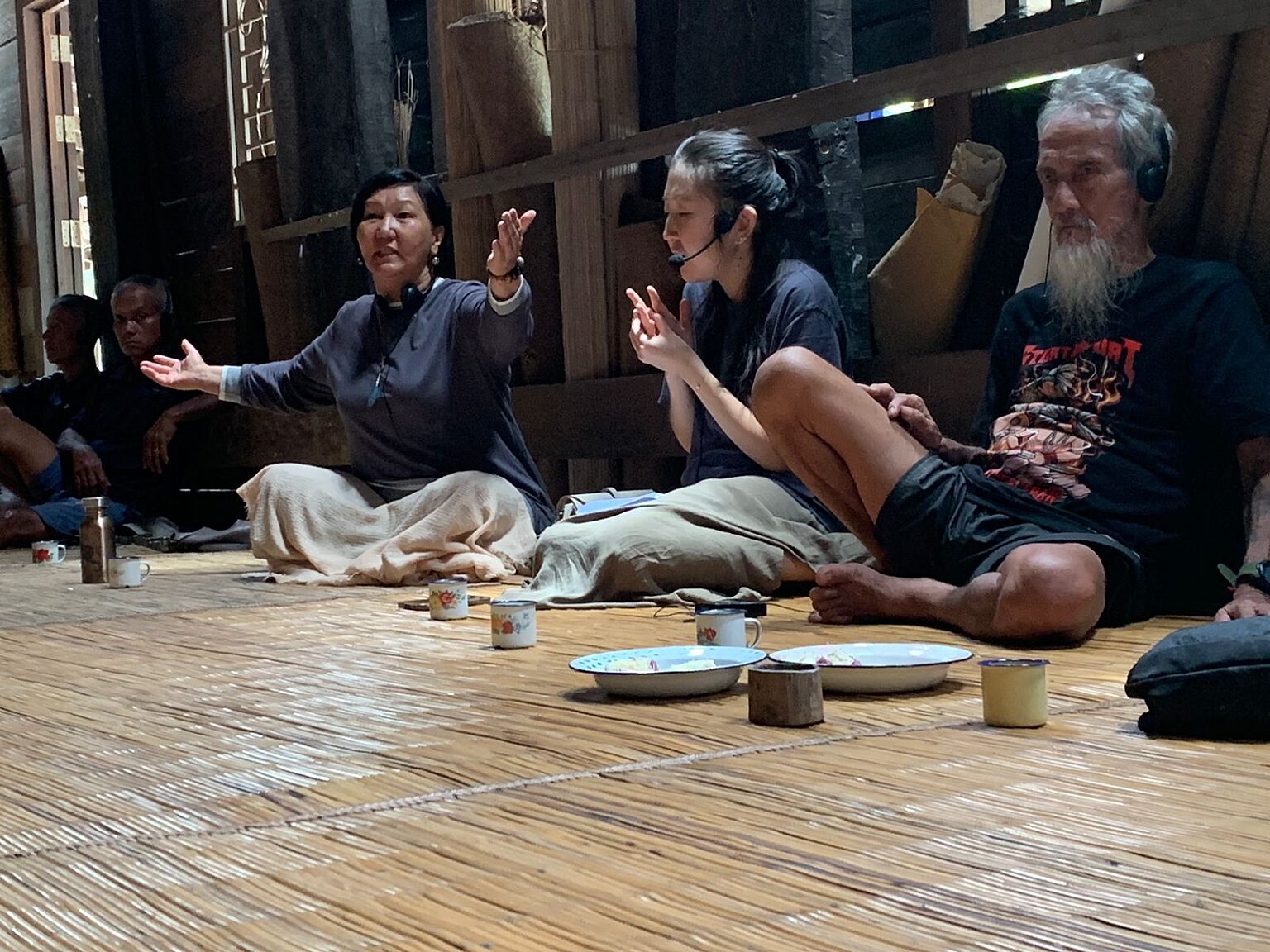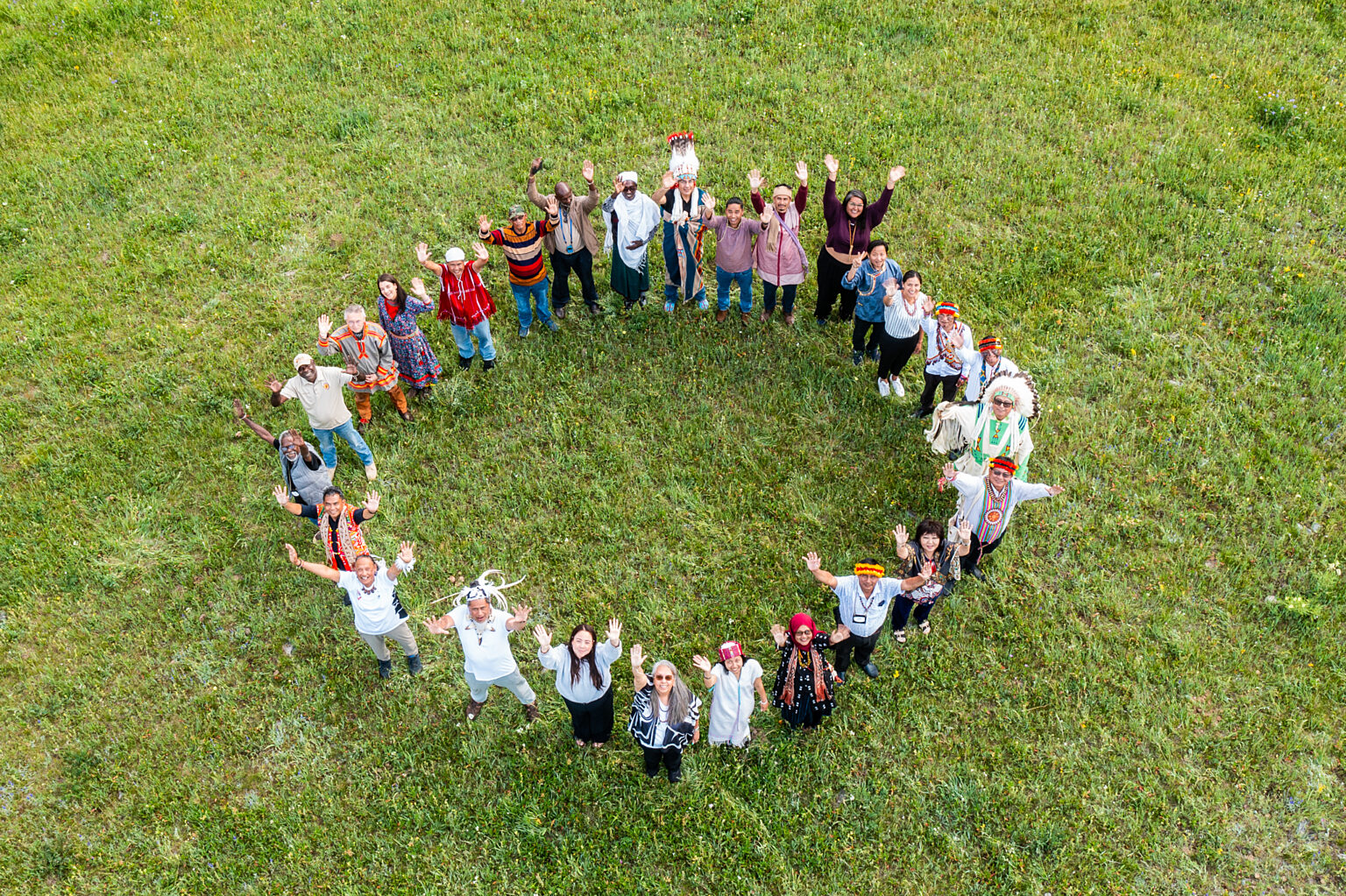The clear, cooling waters of the Sungai Utik River in Indonesia twist and bend through towering Ironwood and Sago trees, swimming below the resounding calls of Hornbills and Kites, and bringing food, medicine, and spiritual power to the vibrant forest and its human caretakers - the Dayak Iban people of Sungai Utik.
For centuries, the river has been the life-giving artery for local Indigenous Peoples referred to in Iban language as Darah, ‘our blood.’ On this warm afternoon, a contingent of Indigenous leaders from across central and southeast Asia, will spend four days exchanging knowledge, blessings and spiritual energy as part of a Regional Gathering of the Wayfinders Circle.
“The abundance of nature here is even greater than in Hin Lad Nai,” remarks Chaitawat “Tot” Chomti (Karen People of the Hin Lad Nai community in Northern Thailand), a beekeeper and climate activist. “They have smaller mountains and larger plains, resulting in greater abundance. [But] the kinds of trees are pretty much the same.”
Chomti and ten other international delegates have recently arrived from their home territories, traveling up to three days to gather at this storied river’s edge. He is joined by his Hin Lad Nai colleague Aphichai Khacha; byTsewang Bista and Ashoka Pariyar from the Lhoba Indigenous Community of Nepal and NEFIN (Nepal Federation of indigenous Nationalities); World Union of Indigenous Spiritual Practitioners (WUISP) representatives Altantsetseg Tsedendamba from Arga Bilig, Mongolia, and Kuluipa Akmatova from the Kushchu and Tashtanbek clans of the Kyrgyz People; from the Philippines, Valeree Nolasco and Luchie Maranan (Tagalog) of Nia Tero and Pawanka Fund, respectively; and from the Indonesian Indigenous organization AMAN (Aliansi Masyarakat Adat Nusantara), Feri Nur Octaviani (Javanese). Several interpreters and support staff are also assisting with this unique regionally focused Indigenous exchange.
This follows successful large-scale member gatherings in Achuar Territory in Ecuador in 2022, in Blackfeet Territory in the U.S. in 2023, and in Mongolia in 2024. Wayfinders Circle leadership decided that a series of smaller, in-person exchanges focused on particular regions would be the most effective way of furthering their mission. This gathering in Sungai Utik is the first of these exchanges.
Community-Building: Sharing Experiences and Struggles
When they first arrived two days earlier, the visiting Wayfinders were greeted by families and elders of the community and participated in a traditional ceremony called Ngalu ka Temuai. Each visitor climbs a small set of wooden stairs to the massive community longhouse, each of the stairways capped with a carving honoring an ancestor. They are then Greeted with carefully woven traditional scarves and a glass of ‘Tuak’ or rice wine to pour over the ground to get rid any negative energy. Following the ceremony, each Wayfinder was then partnered with a host family in the longhouse to encourage closer communication and immersion in Dayak Iban lifeways.
The longhouse was built in the early 1970s and houses all of the roughly 300 people in separate family apartments called Bilik. It’s an impressive structure that facilitates the social, ceremonial and governance functions of the community.
One of the main priorities of the gathering was to learn about each community’s recent past and how they have dealt with outside pressures. In an official welcoming and orientation session, Sungai Utik elders spoke of the challenges they faced in the early 1970s when commercial and government interests first tried to take over their forest.
Elder Igo, who was only 17 at the time, explained, “We resisted the arrival and entry of a private company– they were not welcome here. They stole the wealth of the land without our consent.”
“We experienced discrimination. Religion was forced on us,” remembered Elder Raymundus. “In response, we fought to defend our territory with mapping as evidence presented to the government. The map is our own weapon.”
Raymundus and other elders described how, as young adults, they and the entire community were involved in carefully mapping their territory, noting bodies of water, important trees, bird and wildlife ranges, as well as sacred sites and places of agricultural importance. These efforts have been key in advocating for their land base and their territorial rights. They also helped enable partnerships with organizations like AMAN to maintain their systems of governance and self-determination – which they still struggle to preserve today amid rampant deforestation and mining activity all around their territory.
The visiting Wayfinders in turn shared the ways their territories have been threatened and the ongoing challenges they face in obtaining true self-governance and dealing with state and commercial powers in each of their countries. The Lhoba guests spoke of water shortages, Chinese and Indian government incursions to search for uranium and the difficulties of maintaining cultural and spiritual connections as more youth were leaving for large cities. Participants from Hin Lad Nai decried the lack of food sovereignty in their home territory and their struggle against outside agricultural influences pushing them toward monocropping to maximize short term profits.
In the face of these challenges back home, the participants drew inspiration and important lessons from the stories that can help their own land protection efforts. “This is my first visit to a foreign community with forests,” related Tot. “I learned a lot about the protection of the forest which I shall share to my community.”
